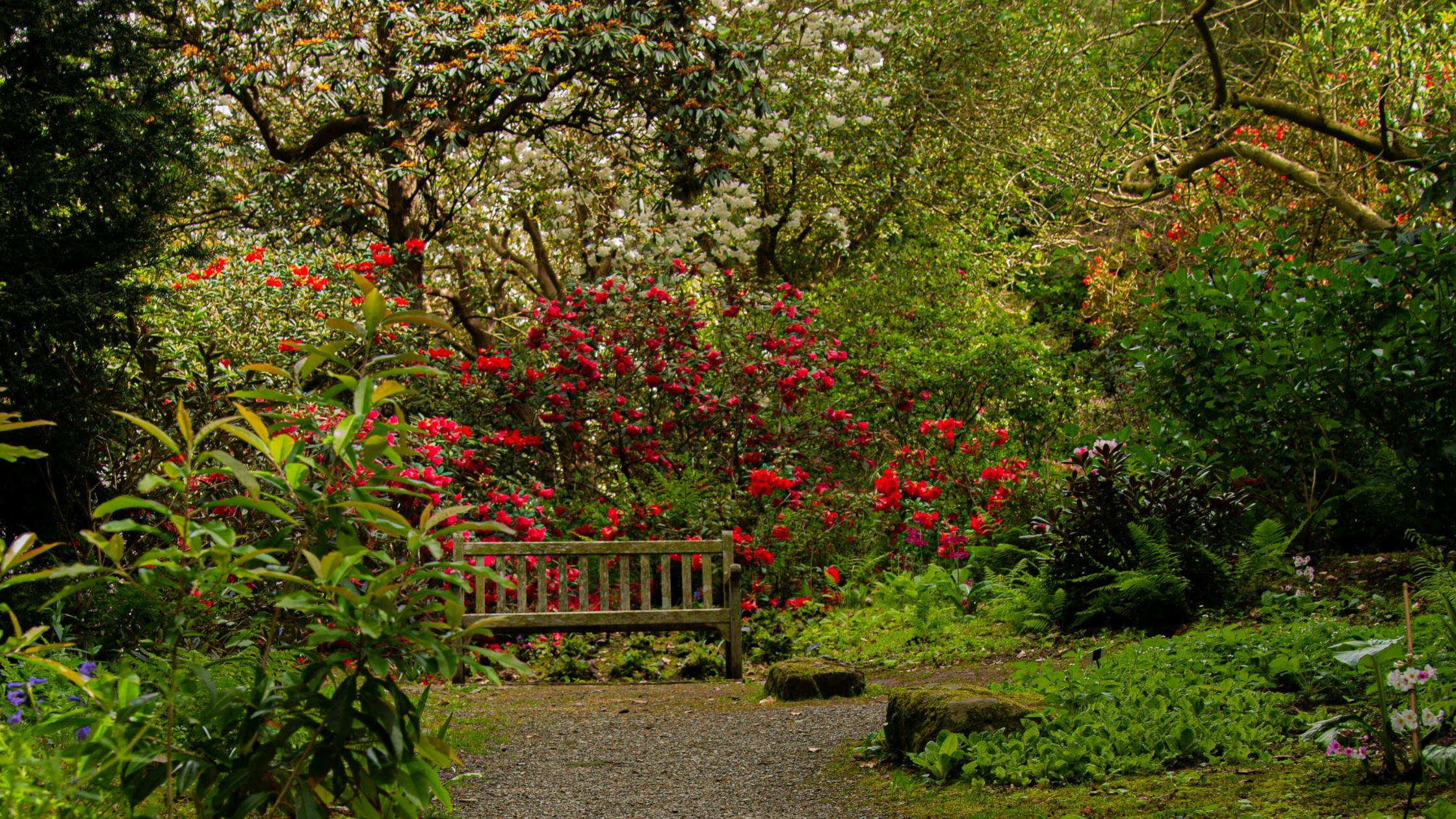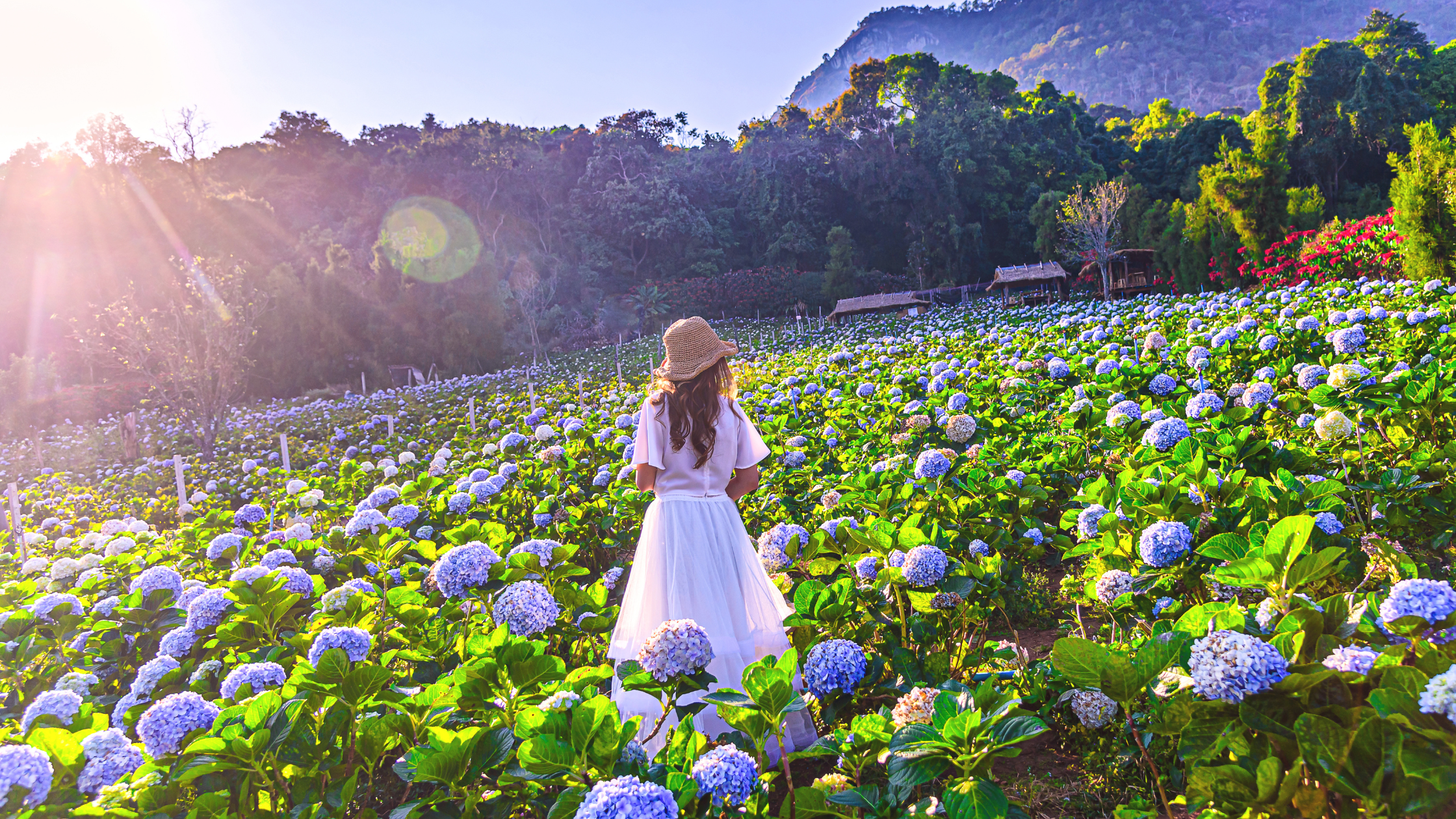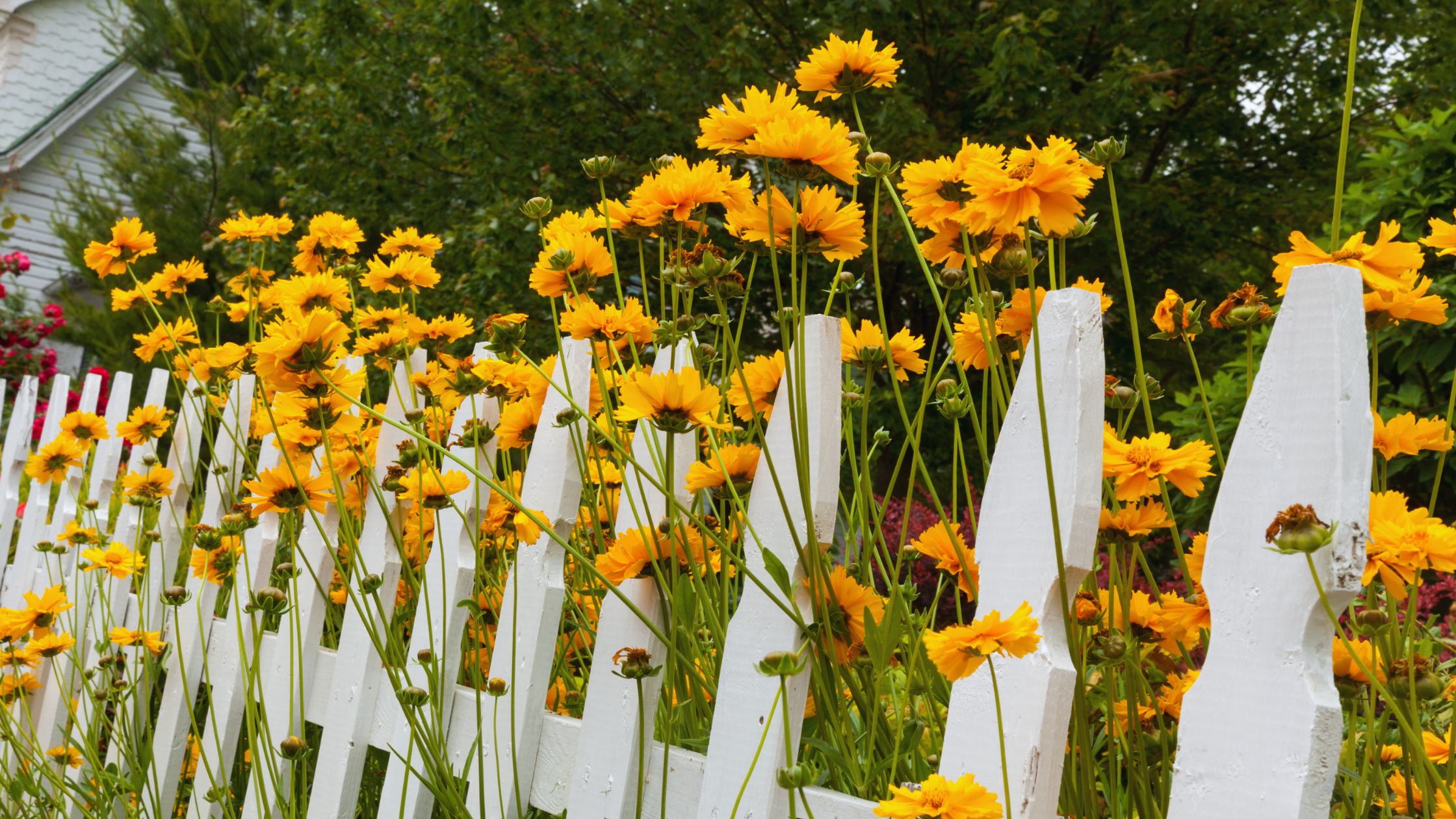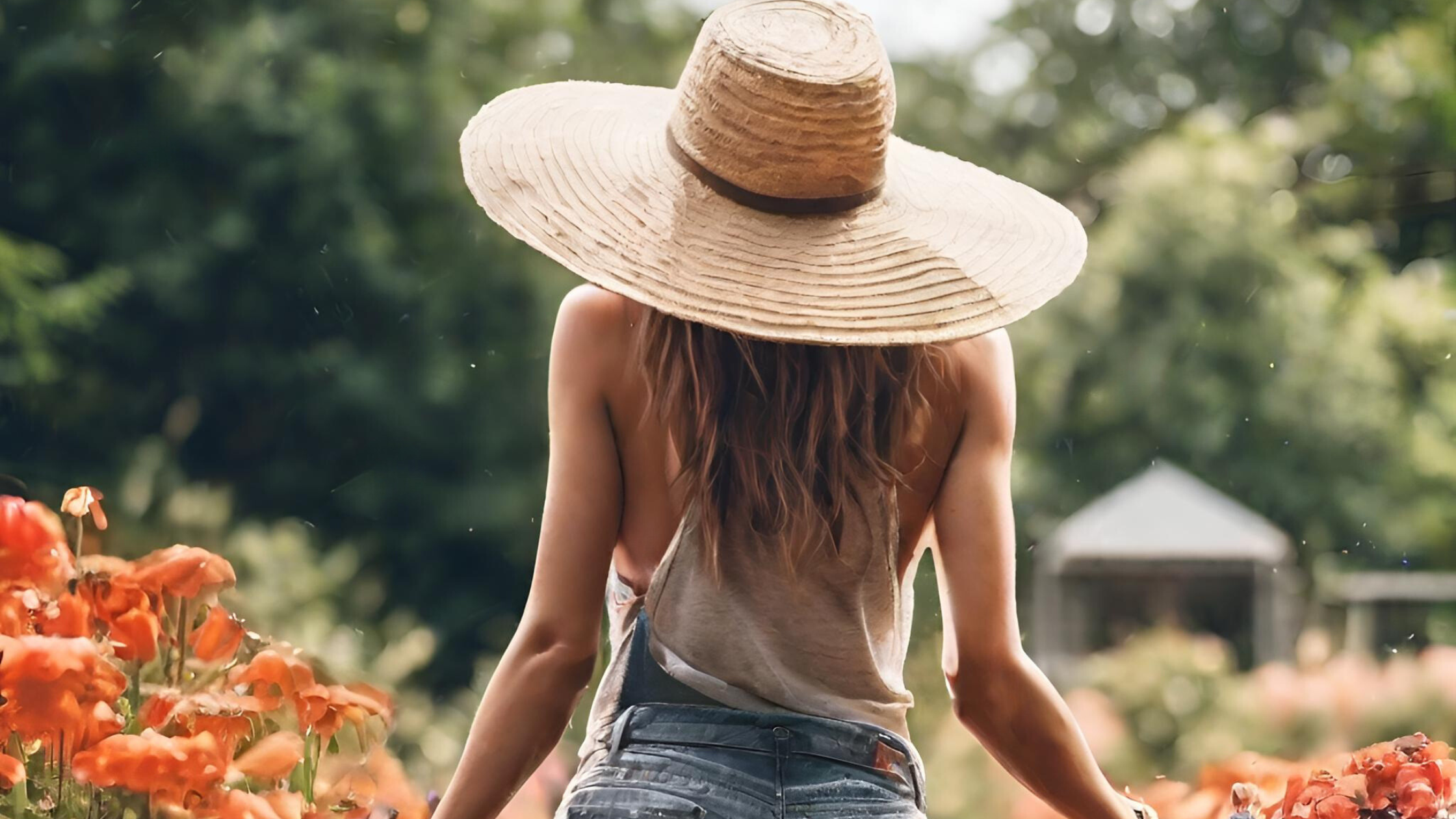Nothing adds a touch of tranquility to a yard quite like a shade garden. Whether you’re working with dappled light under a towering tree or a fully shaded corner of your backyard, the right plants and layout can transform these spaces into lush, serene retreats. In this guide, we’ll walk you through expert tips, design strategies, and plant recommendations to create the perfect shade garden layout.
Understanding Your Shade Conditions
Before selecting plants or designing your garden, it’s essential to understand the type of shade you’re working with. Different plants thrive in different levels of shade, so consider the following categories:
–Full Shade:
No direct sunlight, usually under dense tree canopies or on the north side of buildings.
–Partial Shade:
A few hours of morning or filtered light throughout the day.
–Dappled Shade:
Sunlight that filters through trees, creating a mix of light and shadow.
Knowing your shade type will help you choose the right plants that will thrive in your space.
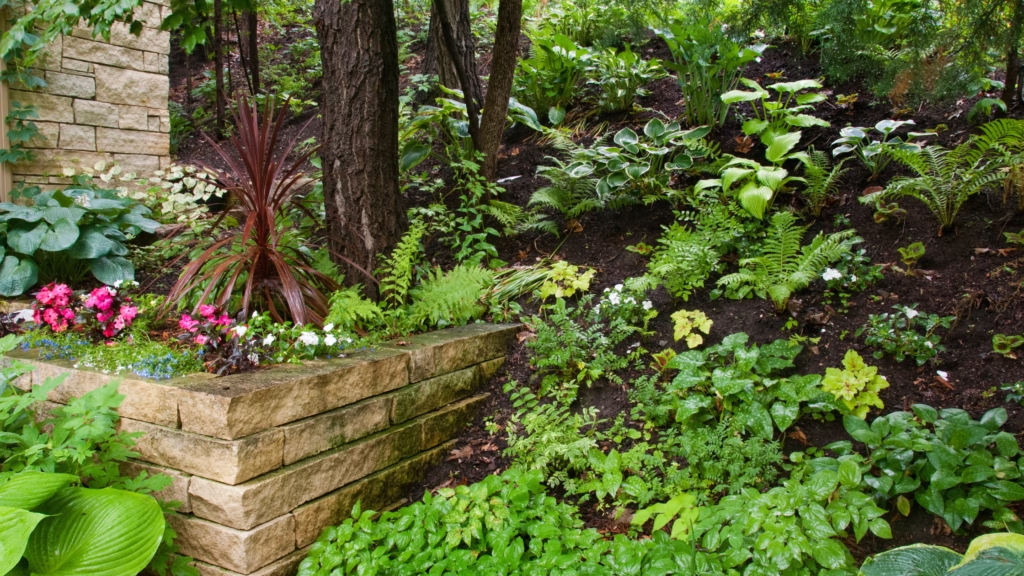
Key Elements of a Well-Designed Shade Garden
Creating a successful shade garden involves more than just choosing the right plants. Here are some essential design tips:
1. Layering is Key
– Mimic the natural woodland aesthetic by layering plants. Use a mix of groundcovers, mid-sized perennials, and taller shrubs or small trees to create depth and interest.
2. Texture and Foliage Variety
– Since many shade-loving plants do not have vibrant blooms, focus on interesting foliage textures and colors. Look for plants with different leaf shapes, variegation, or bold hues like deep greens, purples, or silvers.
3. Create Meandering Paths
– Adding stone, gravel, or mulch pathways can help define garden areas while making maintenance easier.
4. Incorporate Hardscaping
– Benches, birdbaths, trellises, and decorative stones can add structure and charm to shaded spaces.
5. Use Pops of Color
– Even in low-light areas, you can introduce color with shade-tolerant flowers, painted pots, or bright garden furniture.
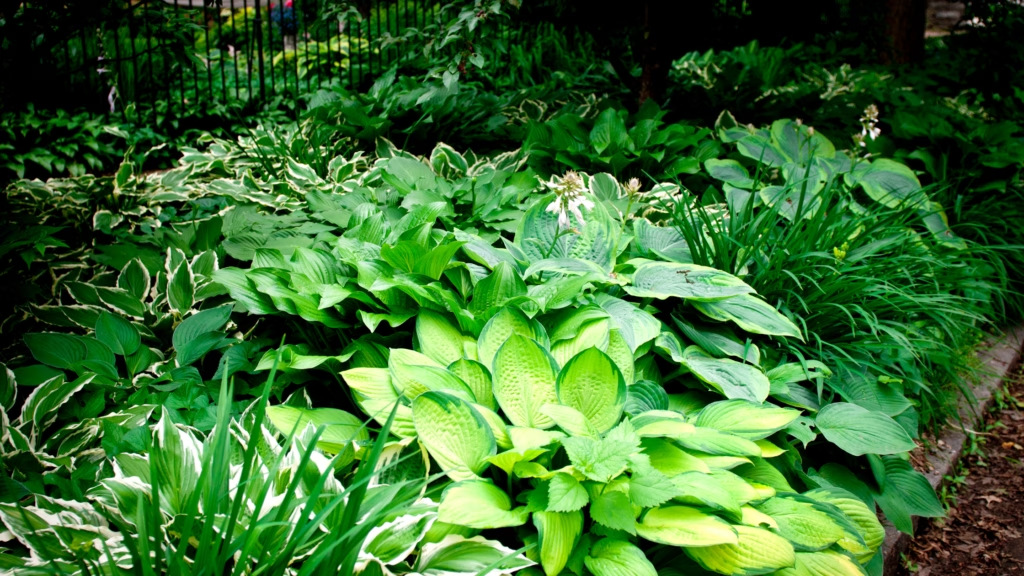
The Perfect Shade Garden Layout
Here’s a simple layout strategy to maximize beauty and functionality:
–Back of the Garden (Tall Layer):
Small shade trees (e.g., Japanese Maple), tall shrubs (e.g., Hydrangeas), or large ferns.
–Mid-Level (Medium Height Plants):
Hostas, Astilbes, Bleeding Hearts, or Ferns.
–Front Border (Low-Growing Plants & Groundcovers):
Heucheras, Ajuga, Foamflower, and Creeping Jenny.
–Pathways & Decorative Elements:
Stone or mulch paths, seating areas, or a small water feature to add movement and tranquility.
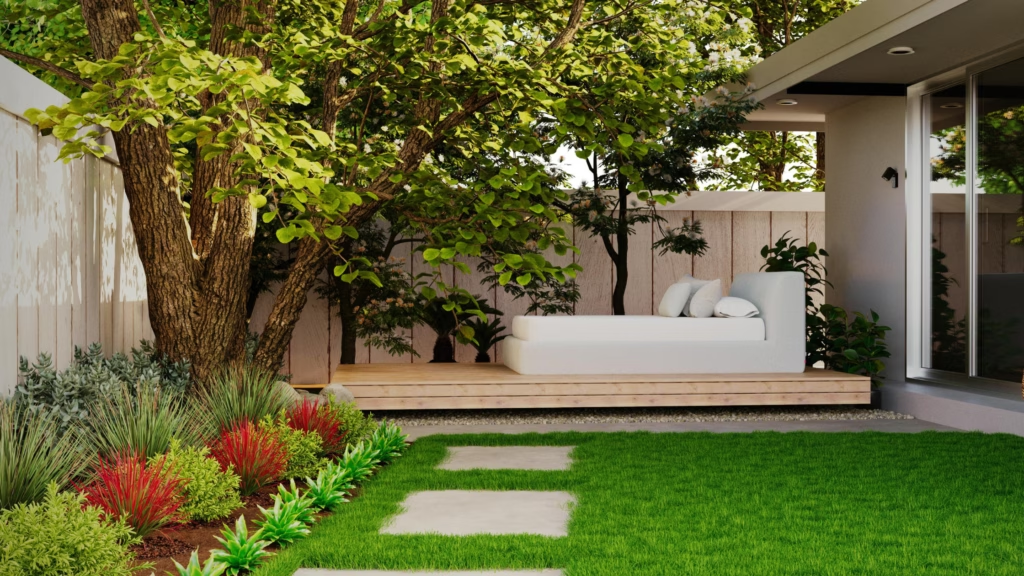
Best Plants for a Shade Garden:
Flowering Perennials:
- Astilbe (feathery plumes of pink, red, or white)
- Bleeding Heart (delicate heart-shaped flowers)
- Toad Lily (exotic orchid-like blooms)
- Columbine (graceful, airy flowers in spring)
- Hellebores (beautiful early blooming white, green and purple flowers)
Related Article: Shade Loving Perennial: Hellebore
Foliage Plants:
- Hosta (varied colors and sizes, excellent texture)
- Heuchera (vibrant foliage in shades of purple, red, and green)
- Ferns (lush greenery that thrives in shade)
Groundcovers:
- Wild Ginger (heart-shaped leaves, spreads well)
- Pachysandra (low-maintenance and evergreen)
- Sweet Woodruff (delicate foliage with tiny white flowers)
Related article: The 10 Best Ground Cover Plants
Shrubs & Small Trees:
- Hydrangea (shade-tolerant varieties like Oakleaf Hydrangea)
- Japanese Maple (stunning foliage, perfect for shade gardens)
- Rhododendron (thrives in dappled light and offers vibrant blooms)
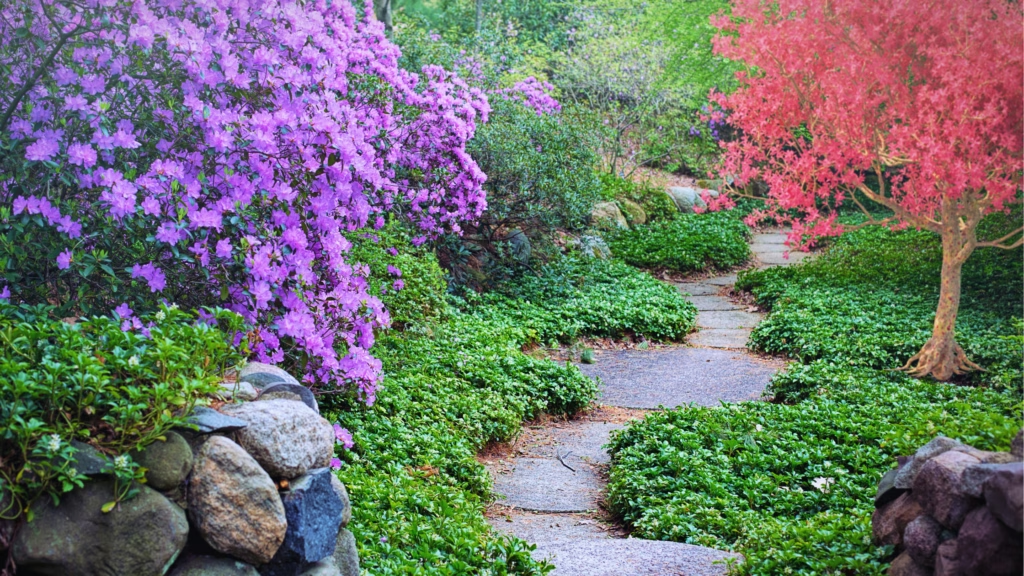
Tips & Tricks for Maintaining a Thriving Shade Garden
✔ Amend the Soil – Shade gardens often have dry or compact soil. Enrich with compost to improve drainage and nutrients. ✔ Mulch Generously – A thick layer of mulch helps retain moisture, regulate temperature, and suppress weeds. ✔ Choose Deer-Resistant Plants – Many shade plants are favorites of deer, so consider ferns, hellebores, and bleeding hearts to deter them. ✔ Water Wisely – Shaded areas can retain moisture longer, but tree roots may compete for water. Check soil regularly and water as needed. ✔ Prune Strategically – Trim tree branches if more light is needed or to create dappled shade.
Shade gardens offer a magical escape filled with lush foliage, vibrant flowers, and a peaceful ambiance. By carefully selecting plants and designing your space with depth, texture, and color, you can turn even the shadiest corner into a breathtaking retreat. Whether you’re a seasoned gardener or just starting, these tips and plant selections will help you cultivate a stunning, thriving shade garden layout.
Happy gardening! x
